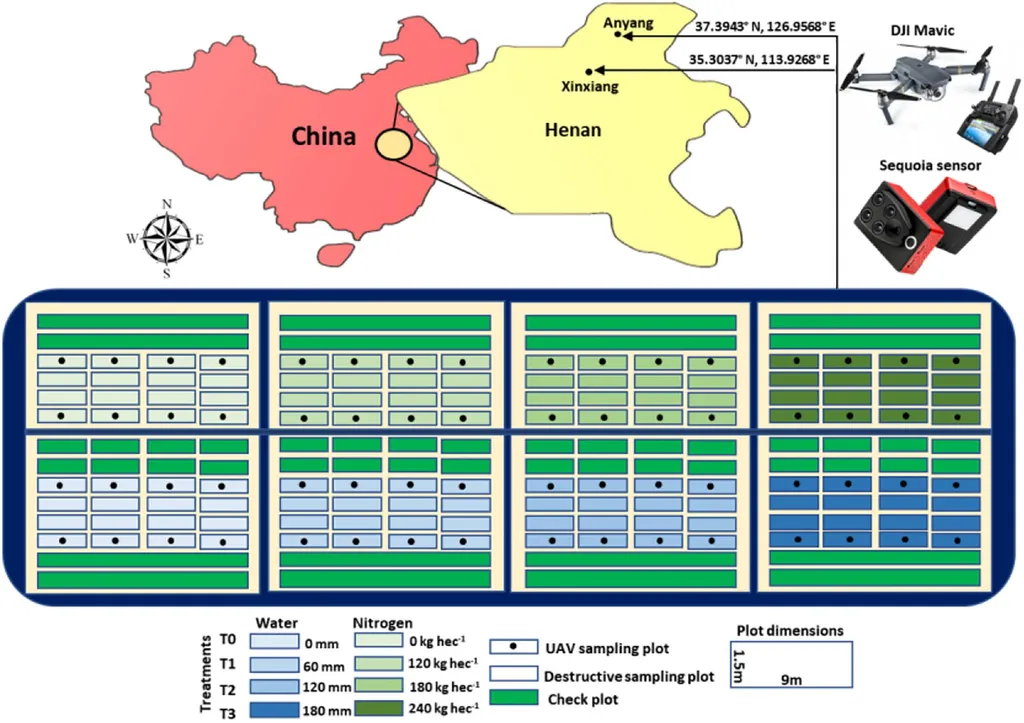In the heart of China’s Shanxi province, researchers have developed a novel approach to optimize nitrogen topdressing for winter wheat, potentially revolutionizing agricultural practices and boosting the sector’s sustainability. The study, led by Yu Zhao from the College of Agriculture at Shanxi Agricultural University, combines remote sensing data with the Decision Support System for Agrotechnology Transfer (DSSAT) model to strike a balance between yield and production costs.
Excessive nitrogen fertilization has long been a concern, leading to environmental pollution, degraded water and soil quality, and increased production costs. Zhao’s team sought to address these issues by creating a two-step data assimilation strategy. “Our goal was to develop a system that could accurately monitor aboveground dry biomass (AGB) and use that information to optimize nitrogen fertilization recommendations,” Zhao explained.
The first step involved establishing a data assimilation system that minimizes the discrepancy between AGB estimated from remote sensing and that simulated by the crop growth model using a particle swarm optimization approach. The second step constructed target yields under varying growth conditions using the DSSAT model and nitrogen economic return curves.
The results were promising. The AGB monitoring model achieved high accuracy, with determination coefficient (R²) values of 0.94 and 0.82 for the calibration and validation datasets, respectively. The data assimilation-based recommended fertilization showed a negative power-law relationship with AGB at the jointing stage, with fertilization reduced by 6.69%–34.08% compared to high yield levels.
The commercial implications of this research are significant. By optimizing nitrogen topdressing, farmers can reduce production costs and minimize environmental impact without compromising yield. This approach could be particularly beneficial in regions where winter wheat is a staple crop, offering a more sustainable and economically viable solution for farmers.
Looking ahead, this research could shape future developments in precision agriculture. The integration of remote sensing data with crop growth models opens up new possibilities for data-driven decision-making in agriculture. As Zhao noted, “This strategy not only maintains high productivity but also enhances agricultural sustainability.”
The study, published in ‘Frontiers in Plant Science’, represents a significant step forward in the quest for sustainable agriculture. By balancing yield and production costs, this innovative approach could help pave the way for a more environmentally friendly and economically robust agricultural sector.

